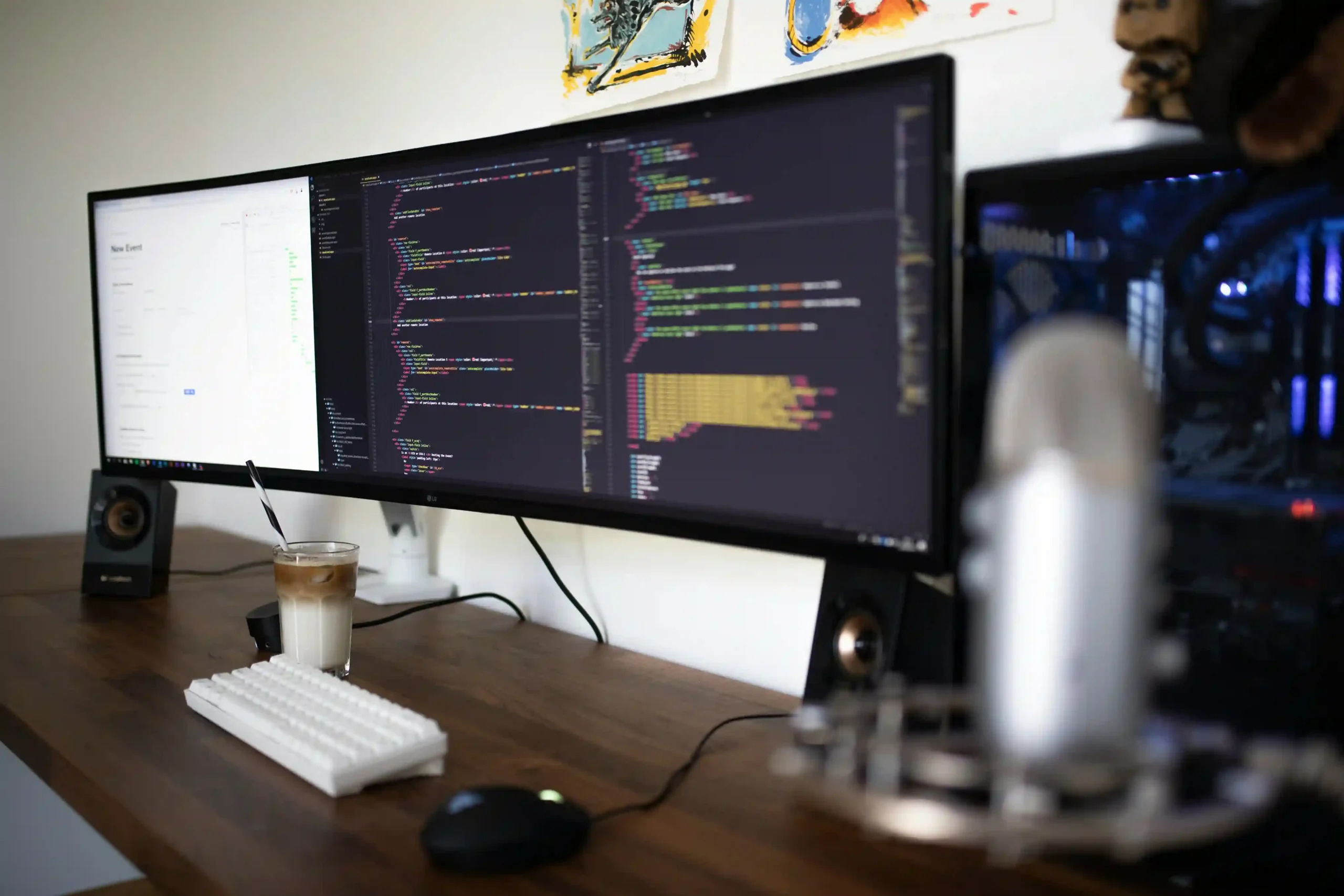How to Get into Web Development: A Comprehensive Guide
ghifari
July 21, 2024
6 min read

In today’s digital age, web development is a highly sought-after skill. Whether you’re looking to change careers, improve your current skill set, or simply take up a new hobby, getting into web development can be both rewarding and lucrative. This comprehensive guide will walk you through everything you need to know to start your journey into web development, from understanding the basics to finding resources and building your first project.
What is Web Development?
Web development refers to the creation and maintenance of websites. It encompasses several aspects, including web design, web content development, client-side/server-side scripting, and network security configuration. Web development is broadly categorized into three types:
- Front-End Development: This involves creating the visual and interactive aspects of a website that users interact with directly. Common technologies include HTML, CSS, and JavaScript.
- Back-End Development: This focuses on server-side development, dealing with databases, server logic, and application programming interfaces (APIs). Common languages include Python, Ruby, PHP, and Java.
- Full-Stack Development: This involves both front-end and back-end development, making you proficient in all aspects of web development.
Why Pursue a Career in Web Development?
There are several reasons why web development is a great career choice:
- High Demand: There is a growing need for skilled web developers in various industries.
- Flexibility: Web developers often have the flexibility to work remotely or freelance.
- Continuous Learning: The field is constantly evolving, offering endless opportunities to learn new technologies.
- Creative Outlet: Web development allows for creativity in design and problem-solving.
Getting Started: The Basics

1. Learn the Fundamentals of HTML, CSS, and JavaScript
To get started with web development, you need to learn the three core languages of the web:
- HTML (HyperText Markup Language): The standard markup language for creating web pages. It structures the content on the web.
- CSS (Cascading Style Sheets): A style sheet language used for describing the look and formatting of a document written in HTML.
- JavaScript: A programming language that enables interactive web pages. It allows you to create dynamically updating content, control multimedia, animate images, and much more.
2. Understand Version Control Systems
Version control systems like Git are essential for managing changes to your code. They allow you to track revisions and collaborate with other developers. GitHub is a popular platform for hosting and sharing code repositories.
3. Get Familiar with Web Development Tools
Several tools can help streamline your web development process:
- Code Editors: Tools like Visual Studio Code, Sublime Text, and Atom provide a powerful environment for writing code.
- Browser Developer Tools: Modern browsers come with built-in tools that allow you to inspect and debug your code.
Read also : How Long Does It Take to Learn Web Development?
Choosing Your Path: Front-End, Back-End, or Full-Stack?
Front-End Web Development
If you enjoy creating visually appealing and interactive user interfaces, front-end development might be for you. In addition to HTML, CSS, and JavaScript, you’ll need to learn frameworks and libraries such as:
- React: A JavaScript library for building user interfaces.
- Angular: A platform for building mobile and desktop web applications.
- Vue.js: A progressive JavaScript framework for building user interfaces.
Back-End Web Development
If you’re more interested in the server-side logic and databases, back-end development could be your path. Key technologies and languages include:
- Node.js: A JavaScript runtime built on Chrome’s V8 JavaScript engine.
- Python: A versatile language often used in back-end development with frameworks like Django and Flask.
- Ruby on Rails: A server-side web application framework written in Ruby.
Full-Stack Web Development
For those who want to handle both front-end and back-end development, becoming a full-stack developer is the way to go. This requires a broader knowledge base, including both sets of technologies mentioned above.
Building Your Skills: Practice, Projects, and Portfolio

1. Online Courses and Tutorials
There are numerous online resources to help you learn web development. Some popular platforms include:
- freeCodeCamp: Offers a comprehensive, free curriculum covering both front-end and back-end development.
- Codecademy: Provides interactive courses on various programming languages and frameworks.
- Coursera: Offers courses from universities and colleges around the world.
2. Build Projects
The best way to learn web development is by building projects. Start with simple projects and gradually take on more complex ones. Examples include:
- Personal Website or Portfolio: Showcase your skills and projects.
- Blog: Create a blog to share your learning journey.
- E-commerce Site: Build a basic online store to understand back-end development.
3. Join Communities
Joining web development communities can provide support, feedback, and networking opportunities. Some popular communities include:
- Stack Overflow: A question-and-answer site for programmers.
- Reddit: Subreddits like r/webdev and r/learnprogramming are great for advice and discussions.
- GitHub: Contribute to open-source projects to gain experience and visibility.
Building a Portfolio
A strong portfolio is essential for showcasing your skills to potential employers or clients. Include your best projects, clearly explain your role in each project, and highlight the technologies used. Make sure your portfolio is visually appealing and easy to navigate.
Applying for Jobs
Once you have a solid foundation and a few projects in your portfolio, you can start applying for jobs. Tailor your resume and cover letter to each position, emphasizing relevant skills and experience. Some job search platforms to consider include:
- LinkedIn: A professional networking site with job listings.
- Indeed: A job search engine with a wide range of listings.
- Glassdoor: Provides job listings and company reviews.
Read also : What Does a Web Developer Do on a Daily Basis?
Continuous Learning and Improvement
Web development is a field that constantly evolves. To stay current, regularly read industry blogs, follow influential developers on social media, and participate in online courses and webinars. Some popular resources include:
- MDN Web Docs: A comprehensive resource for web developers.
- CSS-Tricks: A blog and reference site for CSS and front-end development.
- Smashing Magazine: An online magazine for web designers and developers.

Conclusion
Getting into web development is a journey that requires dedication, practice, and continuous learning. By understanding the basics, choosing your path, building projects, and creating a strong portfolio, you can set yourself up for success in this dynamic and rewarding field. Whether you aim to become a front-end developer, back-end developer, or full-stack developer, the resources and opportunities available today make it possible to achieve your goals. Start learning, keep building, and enjoy the process of becoming a skilled web developer.
Related Article
How to Choose the Best Web Development Framework for Your Project
In the fast-paced world of web design, choosing the right web... In the fast-paced world of web design, choosing the right web development framework can make or break your project. With countless options...
10 Essential Skills Every Web Developer Should Learn
Photo by Joshua Aragon on Unsplash In today’s tech-driven world,... Photo by Joshua Aragon on Unsplash In today’s tech-driven world, web development is one of the most in-demand careers. Whether...
Top Web Development Trends in 2024: What’s New in Tech?
Photo by Andrew Neel on Unsplash The web development landscape... Photo by Andrew Neel on Unsplash The web development landscape is constantly evolving, and 2024 is shaping up to be...


